Sleep-Wake disturbances disturb normal sleep, and sleep is crucial to health and well-being. They pose serious clinical challenges to bodily, psychological, and social health for the individual. Impaired or non-restorative sleep can cause impairment and adversely affect quality of life and community health (Karna et al., 2023). These conditions are categorised by the International Classification of Sleep Disorders (ICSD) as insomnia, sleep-disordered breathing, hypersomnolence, circadian sleep disorders, parasomnias, and movement-associated disorders and are managed by unique management tactics.
It is crucial to understand biological and psychological causes to further manage these issues. Neurobiological processes regulate the sleep cycle through genes and environments, yet tension and anxiety can disturb sleep quality. They arise among individuals with all backgrounds; adults can have insomnia or hypersomnolence, but children can become hyperactive or irritable. Identification of sleep-wake disorder complexity is crucial to efficient clinical work and sleep public health promotion.
Read More: Unlocking Better Sleep: Understanding and Addressing Sleep Disorders
Classifications of Significant Disorders
1. Understanding Insomnia
Insomnia is a frequent sleep disorder with difficulty staying asleep or waking up during a doze being an issue. Insomnia can cause sleepiness during the day, mood impairment, and cognitive impairment. The insomnia is chronic when symptoms occur for more than three months, at least three times per week, and cause extreme distress. It is primary/independent and secondary/due to another disorder or drug dependency (Thorpy, 2012). It is of subtypes like psychophysiological and paradoxical insomnia, which render it difficult to diagnose and to treat.
The origin of insomnia is multi-factorial and is rooted in biological, environmental, and psychological factors, such as evening tension and evening light exposure (sections 3 and 4). CBT-I is commonly used as a first-line treatment; however, when drug dependency is present, medication must be administered cautiously. Approximately one-third of adults will at some time during their life experience some form of insomnia, and thus, effective treatments are necessary.
Read More: What is Cognitive Behavioural Therapy for Insomnia (CBT-i)?
2. Exploring Hypersomnolence
Hypersomnolence, or daytime hypersomnolence, is an inevitable sleep pressure during the day after a normal night’s sleep. It badly handicaps daily functioning and quality of life and leads to intellectual impairments and spontaneous sleep attacks. Hypersomnolence comprises idiopathic hypersomnia, which manifests with excessive nocturnal sleep for over ten hours and sleep inertia, and narcolepsy, with two kinds present: Type I with cataplexy and Type II without it.
Diagnosis usually denotes objective findings such as reduced hypocretin levels or characteristic polysomnography. With ICSD and DSM-5 schemes of classification, hypersomnolence disorder is a main disorder per se and is different from sleep illnesses like obstructive sleep apnea (Thorpy, 2017). The diagnosis entails using scales like the Epworth Sleepiness Scale. The management ranges from changing lifestyles to medication using drugs to promote wakefulness to an interdisciplinary approach towards efficient management of the disorder. See also (Thorpy, 2012).
3. Disorders of Circadian
The Circadian rhythm disorders (CRSDs) disturb the body’s spontaneous sleep-wake cycle, normally aligning to a 24-hour schedule. The internal biological clock and environmental time cues desynchrony with the light-dark cycle is responsible for CRSDs. The International Classification of Sleep Disorders – Third Edition (ICSD-3) classifies CRSDs by diagnostic criteria, with common inclusion of a chronic sleep pattern disruption for three months and/or interfering with daily functionality significantly.
Common causes are delayed sleep-wake phase disorder (DSWPD), advanced sleep-wake phase disorder (ASWPD), irregular sleep-wake rhythm disorder (ISWRD), and non-24-hour sleep-wake rhythm disorder (Non-24). Shift work sleep disorder (SWSD) and jet lag disorder (JLD) are also external causes. Daytime insomnia and sleepiness are common worldwide, and light therapy, along with a fixed schedule, can realign circadian rhythms through external cues.
4. The Enigma of Parasomnias
Parasomnias represent a group of sleep disorders that include perturbing events during sleep with no abnormalities of the architecture of sleep-wakefulness. Parasomnias have been categorised into two groups: non-REM-related and REM-related disorders. Non-REM arousal disorders include confusional arousals, which are confusion on waking, common in children and associated with medical illnesses like obstructive sleep apnea (Thorpy, 2012). Sleep terrors and sleepwalking, which involve a combination of distinct fear and physiological arousal, are included in this category.
REM-related parasomnias generally occur with vivid dream activity. Abnormal violent behaviours with misplaced atonia of muscles are characteristic of REM Sleep Behaviour Disorder (RBD) and are common with neurodegenerative diseases like Parkinson’s disease. Nightmare disorder is brought about by nightmares, causing fear and anxiety, while sleep paralysis, occurring repeatedly upon falling asleep/waking from sleep, can have hallucinations. Sexsomnia and enuresis are present too and show the wide scope of these sleep disorders involving health and safety impairment.
Read More: Exploring the Mysteries of Dreams: Origins, Types, and Interpretations
5. The Reality of Narcolepsy
Narcolepsy is a chronic sleep disorder characterised by sleep attacks and cataplexy during the day. Loss of muscular power when emotions are felt, such as during REM sleep paralysis, when awake and immovable, is a main symptom. The disorder also has a significant impact on daily living and interpersonal interaction, as section 6 describes. The aetiology is believed to involve a deficiency of the neuropeptide orexin, which regulates wakefulness, often resulting from the loss of orexin-producing neurons due to autoimmunity.
There is a type 1 with cataplexy and type 2 with an absence of cataplexy (Thorpy, 2017). Diagnosis involves comprehensive examinations, including patient history, polysomnography, and multiple sleep latency tests. It is treated normally by a combination of daytime alertness stimulators and evening sleeping tablets, and reduced cataplexy. Section 5 gives a prevalence rate of 44.3 cases per 100,000 individuals based on upcoming studies regarding the biological foundation and therapy of narcolepsy.
Read More: A new light-activated drug can induce Sleep without any harmful effects
The Mind-Body Connection: Biological and Psychological Foundations
Sleep disorders are the ultimate result of the interaction between sophisticated biological and psychological processes. Neurobiological studies have assigned different mechanisms to regulate sleep, with special emphasis being made regarding activities of neurotransmitter systems like the monoamines, acetylcholine, and other peptides. The neurotransmitters all balance each other out in the ascending reticular activating system to either keep one awake or regulate the sleep-wake cycle (Liu et al., 2018).
There are genes to it as well; there is hereditary transmission in some diseases, like insomnia. Heritability analyses estimated high heritability of susceptibility (Liu et al., 2018). Psychologically, sleep quality is forcefully impacted by anxiety and stress. Anxiety can disturb REM sleep and lead to nightmares and disturbed sleep behaviour (Miremadi & Asadi, 2023). On another note, insomnia can promote symptoms of anxiety and form a cycle whereby treatment is difficult to implement.
Moreover, patients with primary psychiatric diseases are known to acquire any form of patterned insomnia or sleep disorder owing to such illnesses (San & Arranz, 2024). Environmental hazards like sound and light pollution equally disturb circadian rhythms and hence disturb sleep outcomes at the health level (Kallweit et al., 2023). In total, biological causality for sleep-wake disturbances is polydetermined and complicated by states of mind and thus necessitates multifold comprehension for adequate action measures.
Read More: Insomnia in Psychiatric Patients Might Lead to Cardio Metabolic Problems
Who’s at Risk? Uncovering the Causes of Sleep Disorders
Sleep-wake disturbances are mediated by various risk factors among interrelated biological, psychological, and environmental origins. Age plays a factor; adolescents and children have delayed sleep phase, while older individuals are most vulnerable to advanced sleep phase disturbances (Circadian Rhythm Sleep Disorders, 2025). There is heritability as well; certain heritable predispositions predispose to certain sleep disturbances (Circadian Rhythm Sleep Disorders, 2025).
Other environmental situations, like non-standard working time, which is also very prevalent among shift-workers, contribute to the risk for circadian disturbances (Sleep Disorders, 2025). Psychiatric illnesses like depression and anxiety have also been closely linked with sleep illnesses; 40 million anxious Americans are equally bound to suffer from sleep illnesses (Miremadi & Asadi, 2023). Further, chronic tension adversely affects physiological processes responsible for sleep quality (Sleep Disorders, 2025). Pre-existing diseases like cardiovascular diseases and metabolic syndromes render an individual susceptible to all kinds of sleep illnesses like obstructive sleep apnea and insomnia (Sleep disorder – Wikipedia, 2025; Karna et al., 2023).
Also surfacing is obesity as the key risk factor for sleep disorders. A higher body mass index contributes to obstructive sleep apnea by causing upper airway anatomical defects (Sleep disorder – Wikipedia, 2025). Cultural tendencies toward a sedentary lifestyle support the association between obesity and sleep disorders, indicating a complex connection (San & Arranz, 2024). Thirdly, alcohol and caffeine consumption can disrupt normal sleep phases and should be closely monitored in individuals at higher risk for sleep-wake disorders (Sleep Disorders, 2025).
Prevalence
The public health issue of unchecked proportions is the sleep disorder, which is presently causing a high percentage of the world’s population. Insomnia is an extremely common disorder, and it affects nearly one-third of adults, with about 10% experiencing severe symptoms interfering with their activities (Karna et al., 2023). Furthermore, an estimated 30–35% of adults experience insomnia symptoms, rising to 75% among older adults. In Spain, chronic insomnia disorder incidence increased over the last two decades and extended to around 14% of its citizens (San & Arranz, 2024).
Sleep-disordered breathing (SDB) incidence rates are variable in their findings; close to 50% of older adults have sleep disturbances. Narcolepsy is present in about 44.3 per 100,000 and has increased quickly over recent years (Karna et al., 2023). The sleep-phase and wake-phase disorders are less common by a factor of 100; prevalence 0.13 to 0.17%, but these are high among psychiatrically distressed individuals (Karna et al., 2023). Parasomnias are, however, extremely common among children—50% can expect to have some form during their childhood (Sleep disorder – Wikipedia, 2025). Parasomnias are short, and their sleep disorder counterpart is long; sleep disorder is thus a sequel to psychiatric diseases; 70-80% of psychiatric disorder patients develop sleep disturbances (San & Arranz, 2024).
Read More: Impact of Sleep Disruptions on Preschoolers’ Emotions and Behaviour
Clinical Features and Symptoms
Sleep disorders have a range of clinical presentations differing drastically from one disorder to another. Insomnia is typically characterised by difficulties in initiating, maintaining, or achieving restorative sleep, leading to daytime impairment such as fatigue and mood disturbances (San & Arranz, 2024). Most will bring them with increased sleep latency with frequent arousals throughout the night to cause irritability and cognitive impairment (Liu et al., 2018). In hypersomnolence disorder, excessive sleepiness during the day persists despite apparently normal nighttime sleep and often generates inappropriate daytime behaviour.
Hypersomnolent patients may have bouts of extended night sleep but wake up not at all refreshed (Chokroverty, 2010). Circadian rhythm disorders have unique challenges; symptoms can create inappropriate sleep-wake patterns, leading to periods of insomnia or daytime sleepiness depending on lifestyle (Miremadi & Asadi, 2023). Parasomnias feature unusual behaviour during sleeping, such as night terrors or sleepwalking. The patient is conscious of these occurrences upon waking up but remembers none from their occurrence at night (Chokroverty, 2010).
Narcolepsy is characterised by overwhelming sleepiness, often following cataplexy—a sudden loss of muscle tone triggered by intense emotions. On a general scale, these clinical displays not only risk individual health but are also likely to worsen pre-existing psychiatric illnesses such as depression and anxiety, and thus present a complex case requiring aggressive assessment and focal intervention (Miller et al., 2019).
Read More: Sleep Disturbance can affect brain functioning and mental health
The Path to Diagnosis: Evaluation
Sleep disorder diagnosis relies on a combination of clinical evaluation and diagnostic technology. The beginning point towards sleeping pattern and cause is a full medical and psychiatric history elaborated upon in section 4 with respect to risk factors. The process is often initiated with the administration of standardised scales such as the Epworth Sleepiness Scale (ESS) and the Insomnia Severity Index (ISI) to acquire preliminary information about the condition of the patient (Karna et al., 2023).
Additionally, a sleep diary should be used to track sleep habits over time, noting sleep onset latency, night awakenings, total sleep time, and lifestyle factors like caffeine or alcohol consumption. The patient will be best to keep this diary for at least two weeks (Gooneratne & Vitiello, 2014). With an objectively obtained measure in mind, actigraphy can trace motion patterns to quantitatively identify sleep/wake intervals with particular application to the diagnosis of sleep/wake cycle disorders of the circadian rhythm (Circadian Rhythm Sleep Disorders, 2025).
On the other hand, polysomnography can become germane to deeper cases such as obstructive sleep apnea (Karna et al., 2023). Both complete each other to contribute to the body of knowledge regarding one’s sleep health, to allow for precise diagnosis and individually suitable regimens for therapy.
Intervention and Treatment Methods
The treatment for sleep-wake disturbances is multimodal and comprises several modalities of therapy. Medications are core, and new evidence contributes to the pharmacological arsenal of drugs, such as pitolisant for hypersomnolence and suvorexant and lemborexant for insomnia, which modulate histamine levels and block hypocretin receptors (Louis & Videnovic, 2021). Cognitive-behavioural therapy (CBT) has effectively treated insomnia by improving sleep hygiene and challenging unhelpful beliefs.
Exposure to light also regularises biological clocks in circadian rhythm disorders. For obstructive sleep apnea, new CPAP devices simplify compliance with improved analytics. New technology, like hypoglossal nerve stimulation, offers alternatives for those who cannot accept usual treatments. Behavioural interventions, including lifestyle changes, can enhance symptoms, as detailed in section 4. An evidence-based approach that combines pharmacological and behavioural interventions is optimal, with future uses of machine learning individualising treatment protocols to the patient.
Read More: How do we Maintain Good Sleep Hygiene?
Implications for Mental Health Practice and Policy
The treatability of sleep-wake disturbances has significant policy and practice implications for mental health. Sleep disturbance overemphasis when dealing with psychiatric inpatients necessitates overall sleep pattern evaluation because nearly 70-80% suffer disturbances with complex care (San & Arranz, 2024). Mental health professionals should adopt an integrated approach that recognises sleep and mental health as interdependent. Sleep disorders contribute to underlying health issues and can predict conditions such as depression and anxiety (San & Arranz, 2024).
Policies need to mandate regular screening for sleep disorders to improve patient outcomes. Treatment needs to involve behaviour therapies, including cognitive-behavioural therapy for insomnia (CBT-I), which has proven to be effective (San & Arranz, 2024). Thirdly, policies need to stimulate educational programs for lifestyle modifications in sleep quality improvement. There is a need for interprofessional practice among psychologists, psychiatrists, and primary care practitioners to develop comprehensive plans for treatment for sleep disorders and other related psychiatric illnesses. Adoption of practices for policy recommendations will significantly enhance the quality of sleep-wake disorder patient therapy.
Future Directions
The research and treatment window for sleep disorders is soon to advance by leaps and bounds, particularly with the confluence of frontier technologies and interdisciplinary strategies. Recent research foretells how applying machine learning methods can improve classification and comprehension of sleep disorders by eliminating inference from in-depth data to spot fine patterns (Alshammari, 2025). Such capacity for processing large amounts of data can lead towards more precise diagnoses and individualised interventions. In addition, research into genetic and neurobiological models holds out hopes for personalised medicine.
Advances in whole-genome sequencing hold out the possibility of elucidating inherited sleep states and generating personalised therapy (Joiner, 2018). Genetic data incorporated into clinical practice can improve diagnostic specificity and therapy efficacy, particularly for insomnia or narcolepsy type diseases. Additionally, the co-occurrence of sleep disorders and psychiatric illnesses like PTSD highlights the need for holistic treatment that addresses both simultaneously.
There is a continued need to work towards the establishment of merged therapeutic techniques based upon combined drug therapy with behavioural therapy. Finally, research on new pharmacotherapies in the inhibition of specific neurochemical pathways might unveil new possibilities of treating sleep disorders (Kallweit et al., 2023). The horizon of the most advanced pharmacological medication through cannabinoids offers promising futures of application in sleep medicine.
Read More: Psychologists Speak on How Much Sleep We Actually Need
References +
Alshammari, T. S. (2025). Applying Machine Learning Algorithms for the Classification of Sleep Disorders. In 2025 International Conference on Innovative Mobile and Information Technologies (IMIT) (pp. 119–124). IEEE. https://ieeexplore.ieee.org/document/10462120/
Circadian Rhythm Sleep Disorders. (2025). Cleveland Clinic. Retrieved from https://my.clevelandclinic.org/health/diseases/12115-circadian-rhythm-disorders
Chokroverty, S. (2010). Overview of sleep & sleep disorders. The Indian Journal of Medical Research, 131, 126–140. https://pubmed.ncbi.nlm.nih.gov/20308738/
Gooneratne, N. S., & Vitiello, M. V. (2014). Sleep In Older Adults: Normative Changes, Sleep Disorders, and Treatment Options. Clinics in Geriatric Medicine, 30(3), 591–627. https://pmc.ncbi.nlm.nih.gov/articles/PMC4656195/
Joiner, W. J. (2018). The Neurobiological Basis of Sleep and Sleep Disorders. Physiology, 33(4), 226–232. https://pmc.ncbi.nlm.nih.gov/articles/PMC6230548/
Kallweit, M. S., Kallweit, N. P., & Kallweit, U. (2023). Pharmacological Treatments of Sleep-Wake Disorders: Update 2023. Brain Sciences, 13(7), 1070. https://pdfs.semanticscholar.org/e824/eb352f6aba857f3ec8bbdf44aab8234ee942.pdf
Karna, B., Sankari, A., & Tatikonda, G. (2023). Sleep Disorder. StatPearls Publishing. https://www.ncbi.nlm.nih.gov/books/NBK560720/
Liu, Z., Tolaymat, A., & Avula, S. K. (2018). Neurobiology of Common Sleep Disorders. Journal of Neurosciences in Rural Practice, 9(1), 127–134. https://www.neuroscijournal.com/articles/jnnd-aid1013.php
Miller, K. E., Brownlow, J. A., & Gehrman, P. R. (2019). Sleep in PTSD: treatment approaches and outcomes. Current Opinion in Psychology, 30, 123–128. https://pmc.ncbi.nlm.nih.gov/articles/PMC7337559/
Miremadi, S. M. R., & Asadi, S. (2023). The Role of Bio-Psychological Hypomanic Factors in Sleep Anxiety and Hypomanic Disorder. Clinic Search Online, 2(1), 1–10. https://clinicsearchonline.org/article/the-role-of-bio–psychological-factors-in-sleep-anxiety-and-hypomania-disorder
San, L., & Arranz, B. (2024). The Night and Day Challenge of Sleep Disorders and Insomnia: A Narrative Review. Biomedicines, 12(3), 566. https://pmc.ncbi.nlm.nih.gov/articles/PMC10926017/
Sleep disorder – Wikipedia. (2025, August 28). Wikipedia. Retrieved from https://en.wikipedia.org/wiki/Sleep_disorder
Sleep Disorders. (2025). Cleveland Clinic. Retrieved from https://my.clevelandclinic.org/health/diseases/11429-sleep-disorders
Sleep Disorders. (2025). MedlinePlus. Retrieved from https://medlineplus.gov/sleepdisorders.html
St Louis, E. K., & Videnovic, A. (2021). Sleep Neurology’s Toolkit at the Crossroads: Challenges and Opportunities in Neurotherapeutics Lost and Found in Translation. Current Opinion in Neurobiology, 74, 141–151. https://www.sciencedirect.com/science/article/pii/S1878747923011741
Steele, T. A., St Louis, E. K., Videnovic, A., & Auger, R. R. (2021). Circadian Rhythm Sleep-Wake Disorders: A Contemporary Review of Neurobiology, Treatment, and Dysregulation in Neurodegenerative Disease. Current Opinion in Neurobiology, 71, 141–151. https://www.sciencedirect.com/science/article/pii/S1878747923011790
Thorpy, M. (2017). International Classification of Sleep Disorders. In C. E. M. J. G. G. H. R. J. D. G. M. W. T. G. K. N. (Eds.), Sleep Disorders: The Medical Clinics of North America (pp. 573–587). Springer. https://link.springer.com/chapter/10.1007/978-1-4939-6578-6_27
Thorpy, M. J. (2012). Classification of Sleep Disorders. Neurotherapeutics, 9(4), 687–701. https://pmc.ncbi.nlm.nih.gov/articles/PMC3480567/

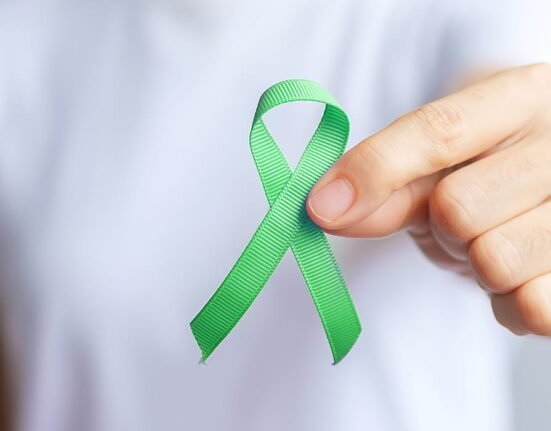

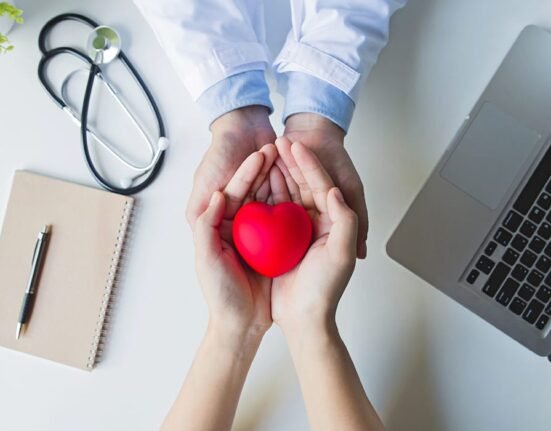




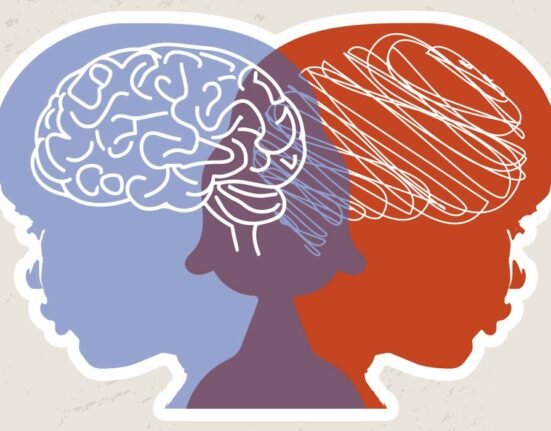
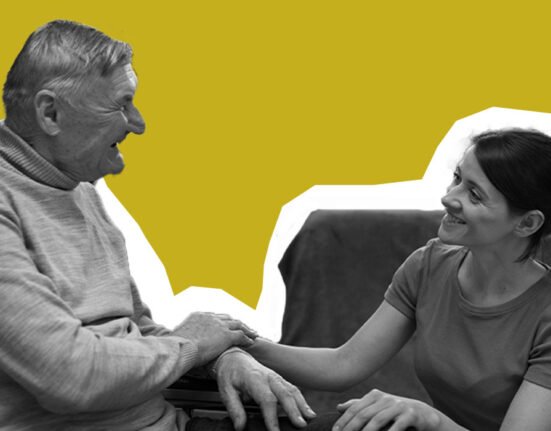

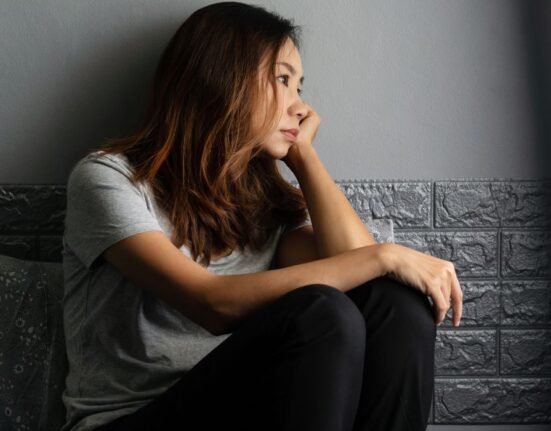

Leave feedback about this